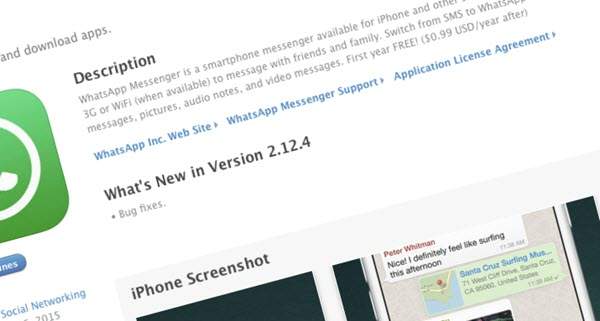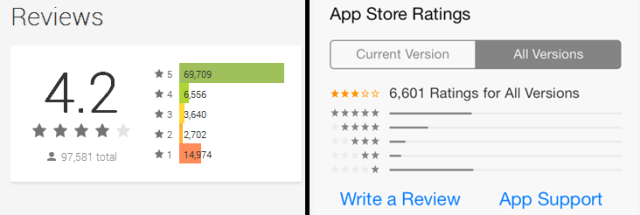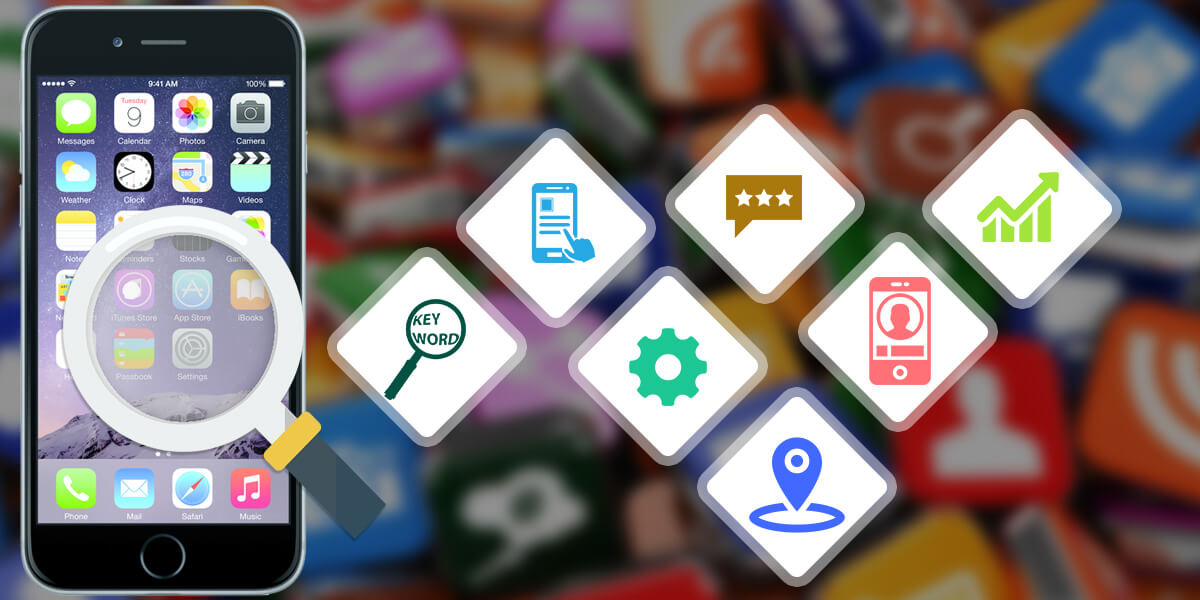App Store optimization – Top 8 Dos and Don’ts
- Mobile
- September 8, 2017
Before launching an app, you have to be prepared with a groundbreaking app marketing strategy. Optimizing the title of the app, adding a description and other features that can best control the app are a few things to be conceived even before the app hits stores.
With Google Play Store operating successfully and 8 successful years of iOS app store, it seems like an eternity in the field of technology – something that has become a vital part of our life.
From messaging to dating apps and health to banking apps, the world is in the palm of our hands. The success of apps across app stores is largely determined by SEO. But, ASO (App Store Optimization) is the new idea.
The search across app stores is not as refined as in search engines – very true. However, that does not mean it is irrelevant.
According to the Google Play Head of Search & Discovery, “for the average app, search actually makes up the vast majority of installs.”
So, it clearly reveals that regardless of how efficient you are at marketing, which can obviously increase your downloads, you would still be dependent on app store based query results.
So, it is very important to set up your app page in the best way within the varied range of app stores.
Let’s dig deeper from this point!
1. Understand Your Target Audience and Competition

Before launching an app, you have to study the market and your targeted customer base.
A perfect ASO strategy always emphasizes on understanding how customers would use the app as well as the deeper view of competitive landscape. To begin with, here are a few questions you must ask yourself:
- What is the common language of my target audience?
- How would my target audience describe my app?
- What could be the top reasons to download and use the app?
- Do I have a competitive advantage?
- What are the targeted keywords of my competitors?
- How can I compete against similar apps on the basis of same keywords?
Do’s: Plan your ASO strategy in such a way so that you step into your customers’ shoes. Your aim is to make your app discoverable in app store searched.
For that, you should target keywords that can drive more traffic. Consumer research is the best way to find out optimal keywords. Likewise, you should also survey the keywords used by your competitors. This can help you determine whether you should use the same keywords or try different ones.
Don’ts: Do not follow what your competitors are doing. To reach out to masses in the app store, make sure your app is different. Don’t use the same keywords as similar apps have done; it can make your app redundant and invisible.
2. Name the App
The most important aspect of App Store Optimization is the name of your app. You need to pay great attention to the name so that it is catchy with correct meta data.
The title or name of the app is the very first thing users see along with the icon. These are two deciding factors that make your app relevant too.
Do’s: Make sure you include the app or brand name in the title. Try to feed at least 1 or 3 keywords into the title. Use appropriate tools to decide ASO keywords. And don’t forget – the key terms should be within the first 25 characters of text.
Don’ts: In iOS, app developers tend to use up 255 characters generously, which is a mistake. Android, contrarily, limits the title length down to 25 characters. You don’t have to use up all the characters and reach the limit.
Always write relevant and useful title, meta data and description. Additionally, don’t stuff keywords unnecessarily; users may start regarding your title as spam.
3. Choosing Your App Description
The app description is that one field you have to fill out in the app’s meta data. In this case, there are 2 parts to consider – content above the fold and content below the fold.
Android restricts the description to 4000 characters for perfect Google Play positioning. However, iOS does not take description search related matters into account, though it is useful for marketing.

Do’s: Your description should give information about the app, explaining how it works, what it does, and what the features are. Your text should be easy to read, including a list of app features, and a short summary describing different aspects of the app that have already been improved with latest updates.
Don’ts: Don’t use dense paragraphs. Don’t push long texts that are difficult to read and could bore your users. Short, crisp, and to-the-point statements with call to action are suggested.
4. Create a Unique App Icon
Your mobile app icon becomes the face of the app. As potential customers browse innumerable apps through the list, visually attractive icons can catch their fancy. Thus, you should focus on creating a unique and attractive icon for the app.
Do’s: The app icon should be attractive, for sure, but what matters is its originality. So, come up with an app icon that is 100 percent original. Try to use a single symbol or shape in the design and keep it as simple as you can.
Make it recognizable too. You can take advantage of using vibrant colors to make the app stand out in the crowd of millions of apps.
Don’ts: Complex app icon designs are usually repulsive. In fact, it has been a trend of customers to ignore apps with complex and illegible designs. Using too many colors, shapes and including excessive amount of text spoils the show.
Read also: Get Familiar with the Best Practices for Designing an App Icon
5. Design of the App
App Store Optimization is also about how well designed your app is. In fact, it can make or break the image of your app. You are allowed to include different images, screenshots or videos, in the store illustrating what the app looks like.
In this way, you allow your users to see the app’s design even before they can download it. Utilize this opportunity to make the most out of the app before it is downloaded.
Do’s: Cash this feature offered by app stores. Include at least 5 different images, or screenshots, in iOS store and Google Play galleries to show how the app looks like.
Use screenshots of the app to guide your users through the core features. You can also add videos to show how the app looks like when it functions. In this way, users can also get an idea of the characteristic features of your app before downloading it.
Don’ts: Don’t just include one picture or screenshot – that’s absolutely not done! Your app would be turned down in seconds if you do this. Rather, you should take greater advantage of using several images to compete with your rivals.
6. Localize App Listing
When you are launching an app, consider a global perspective. There cannot be a one-size-fits-all approach.
In English speaking nations like North America, only 31% of app revenue is generated; whereas, consumers living outside English-speaking nations, 72% prefer using their native language for app shopping despite being fluent in English.
These statistics clearly speak about an ocean of opportunities available to leading app publishers.
Read also: How to Develop a Multilingual App that Outshines Others
Do’s: Brand communication should be adapted, with language adaption, to meet the needs and wants of different audience segments. At the very basic level, speak to customers in their native language. Localization services and low-cost translation can be a great choice.
Don’ts: Do not stick to English, if you are considering a global audience base. To make your app popular, you have to use translation services to offer customized versions to users.
7. Update your App Frequently
Even if you have the most attractive app with compelling content and all the aforementioned features entailed, it may not succeed if you don’t update it.
Apps that are not been updated for long become outdated. Such apps may not adapt to latest devices or versions of the OS as well. So, fixing bugs and errors from time to time requires frequent updates.
Do’s: Update the mobile app timely on regular basis. Whenever needed, you should take measures to enhance user experience as well as quality. Always includes notes in app description so that users can learn about the new changes introduced.
Don’ts: You should never launch an app and just forget about it. To make sure your app is successful you have to eventually keep adding updates to it – that’s the ASO strategy.
Read also: How Would You Know When Your App Needs A Major Update
8. External Factors – Reviews and Ratings
Star ratings and reviews are very important for the success of your mobile app. It is crucial for enhancing your app search results across app stores. In fact, it has direct influence on ASO.

Do’s: Encourage your active user base to rate and review you app as it can increase your ratings and popularity. You can send push notifications that can lead users to your app store.
Experts recommend that you should have at least 100 ratings or reviews for each version of app uploaded to your app store.
Don’ts: If you have obtained 100 ratings, don’t think that your app is the best! Amongst those 100 reviews, there may be a couple of negative reviews too. Try to improvise on those lines and improve.
Read also: The Most Valuable Tips to Get 5 Star Ratings and Reviews for Your App
Conclusion
With careful and planned measures, you can also take your app to new heights using these ASO strategies. A little bit of trial and error can help you catapult past your rivals in the app store and you can find your app on the top of charts.













